Read my face: three years in the garage and now…
PS! Arno, Ranno and Veiko – thanks for helping me with the mast trial 🙂
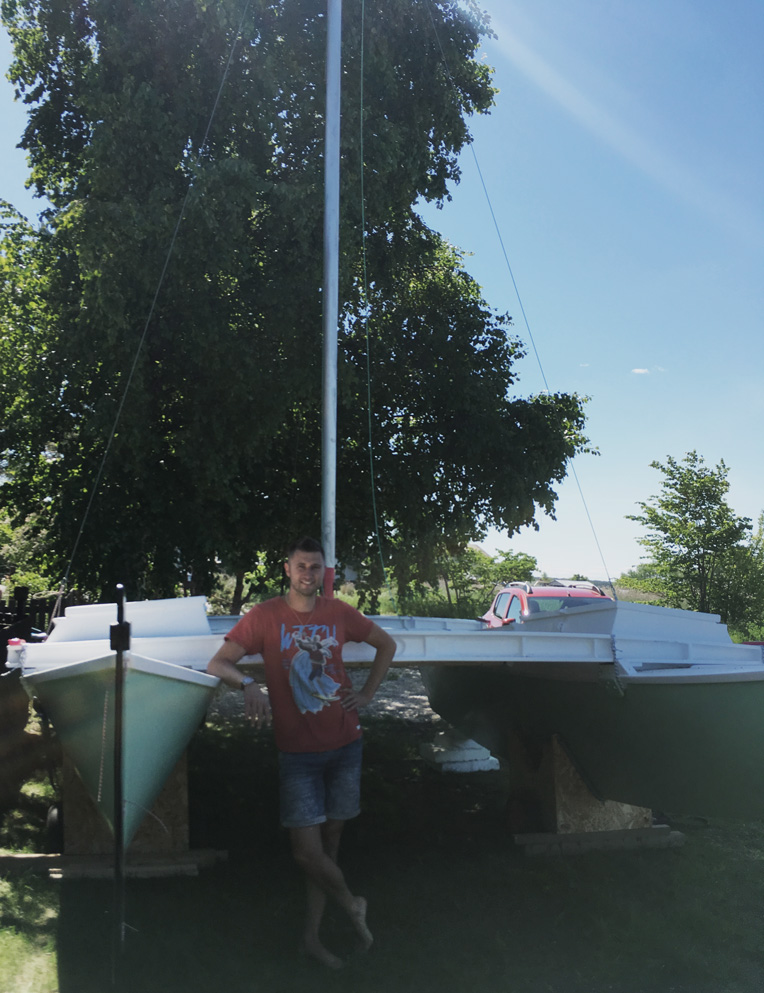

Read my face: three years in the garage and now…
PS! Arno, Ranno and Veiko – thanks for helping me with the mast trial 🙂

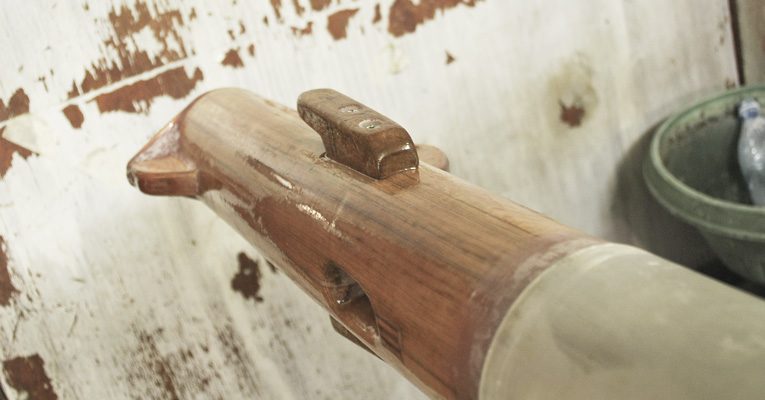
After couple of laborious days of planing-sanding-planing-sanding-swearing-sanding-planing-sweating-sanding-swearing-planing-sanding i finally managed to produce snugly fitting top and heel for the mast:
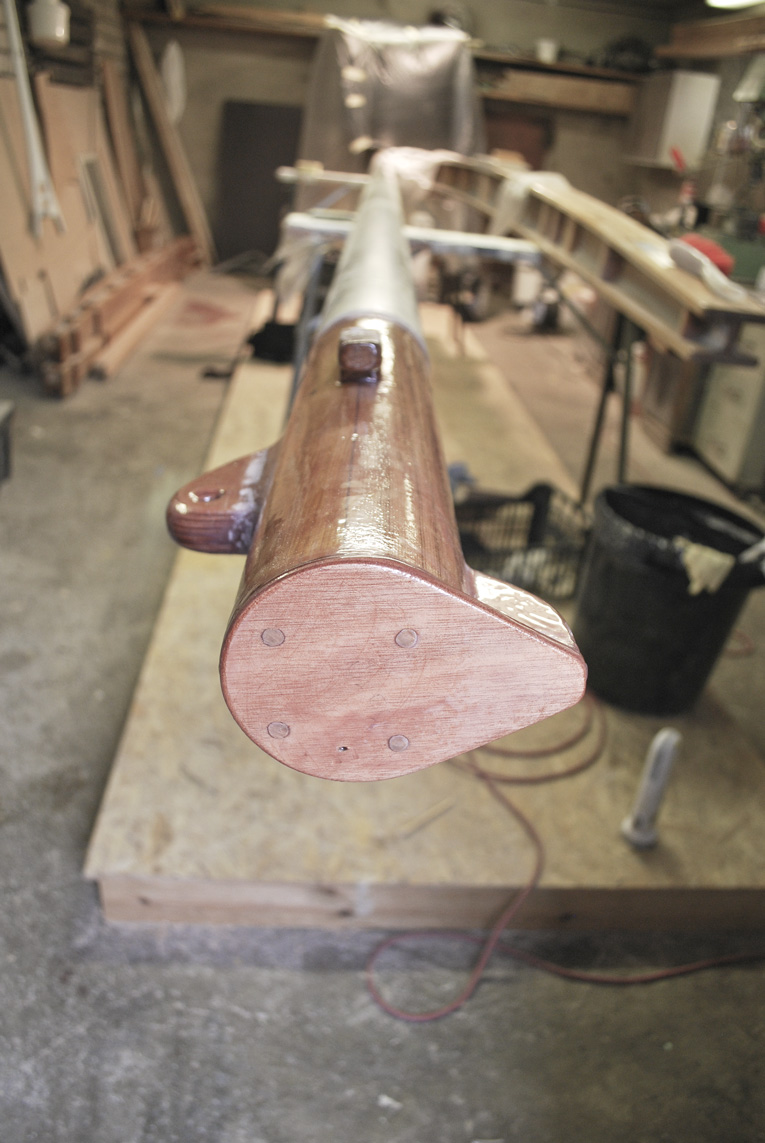
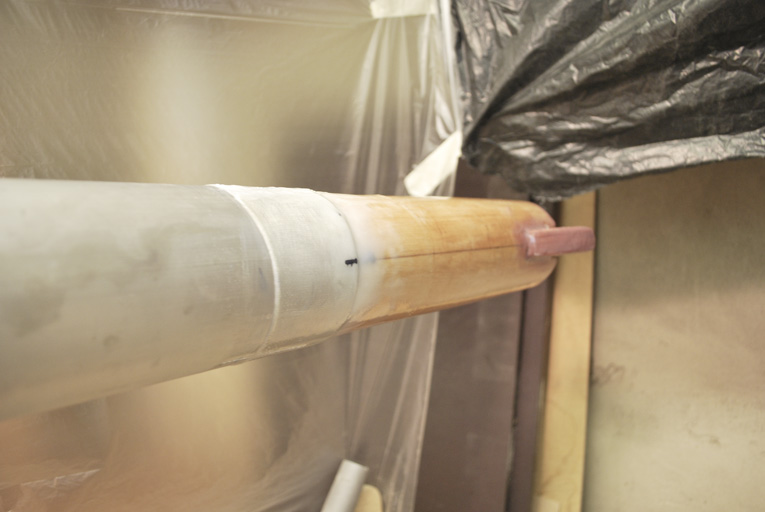
Over a long period of time finally we had a nice weather today, so I headed out with 2 friends & Itatae to measure fixing block locations for beams.
She looks cute ain’t she 🙂

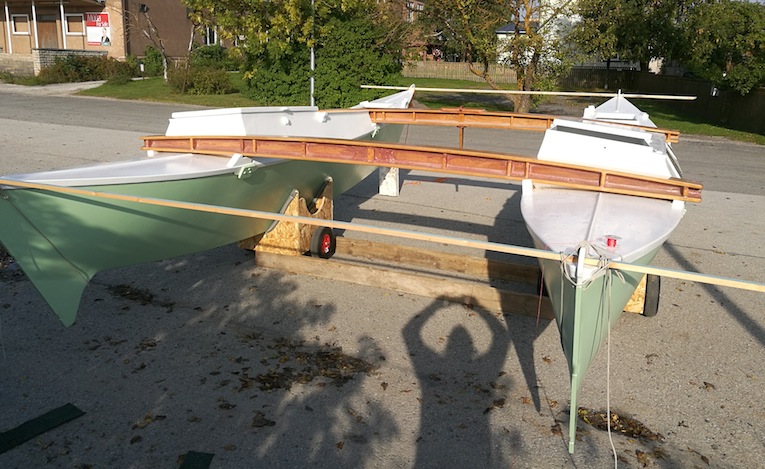
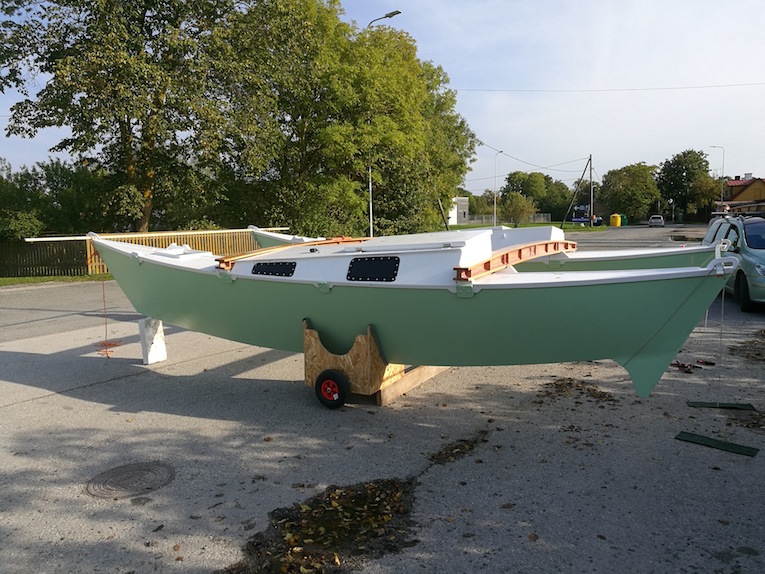
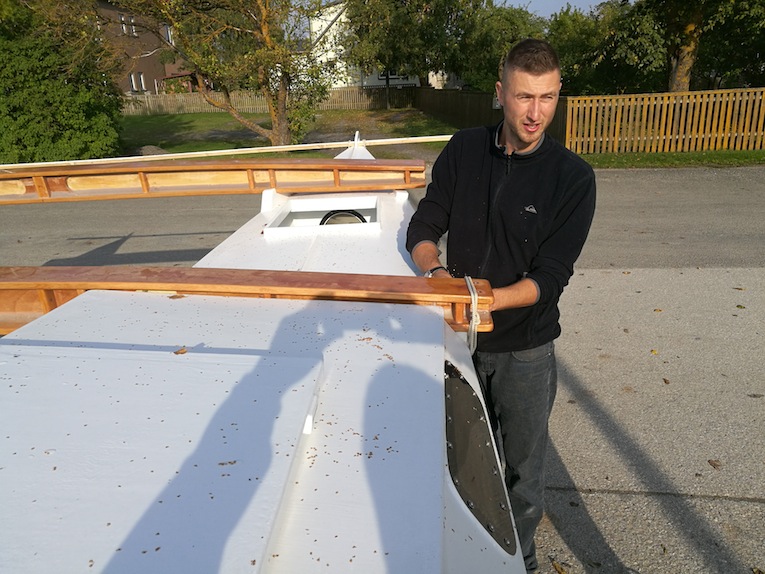

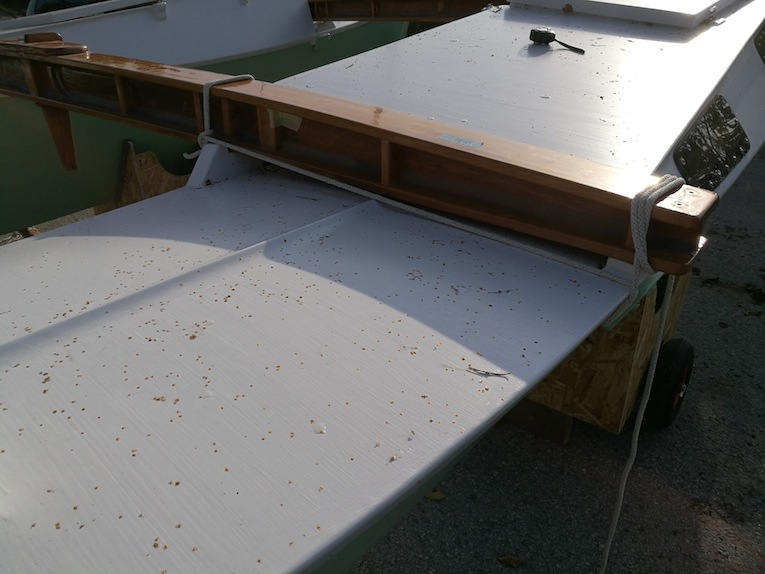
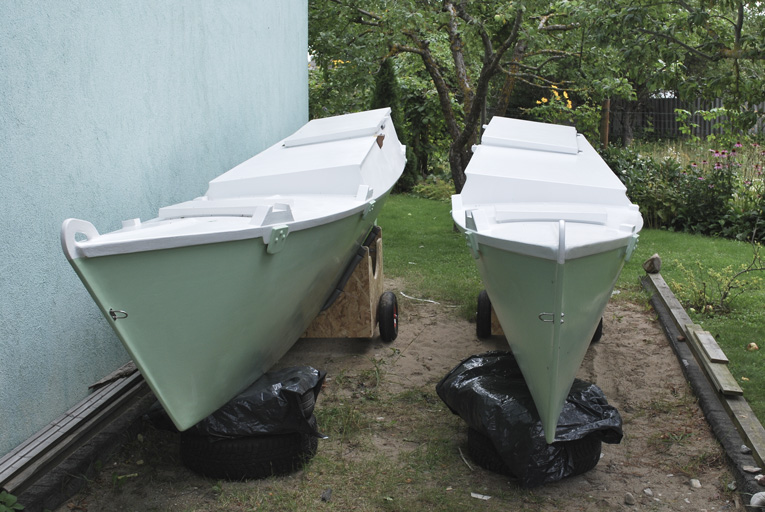
A pretty grand moment 🙂
Its already August – soon enough nasty long, damp & dark winter will knock on the door… Still I have some glimpse of hope, as I finished port hull paint job — I only need to fit windows, main hatch hinges and rudders.
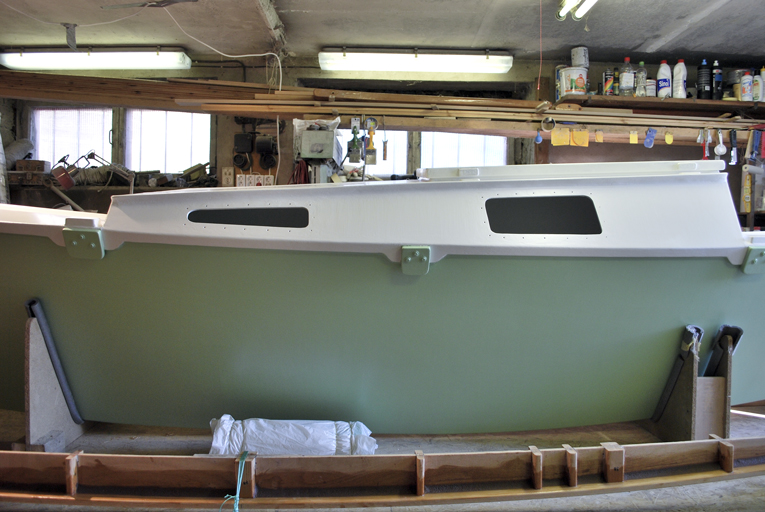
Port hull with fresh paintjob
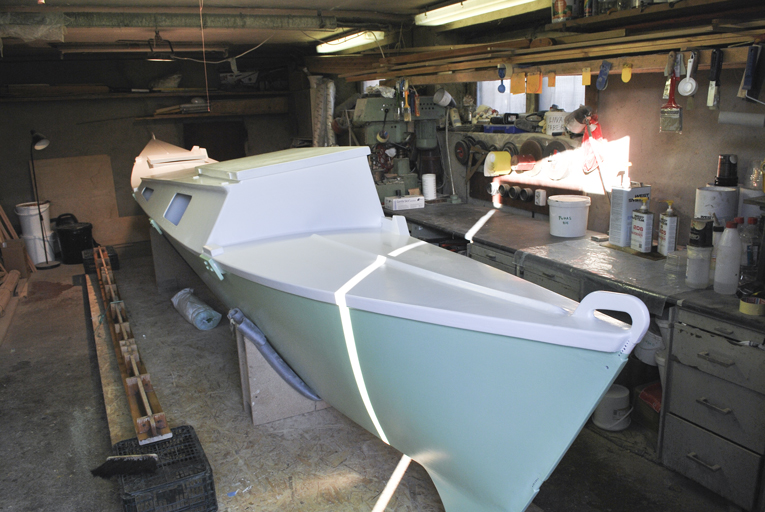
Just look at these neat curves 🙂

Just some few odd jobs left… here’s centre beam under pressure waiting epoxy to reach its final stage (slow hardener for gluing; 50% fast, 50% slow for fillets)

Starboard hull with its new paint (same as port hull — Tikkurila Temadur 20)

Playing with the paint & sniffing the fumes….
… two part epoxy based Tikkurila Temacoat RM40 serves as primer for the hull, I will let it to set for a few days, then there will be applied two part polyurethane Tikkurila Temadur 20 fas a topcoat. Interiors are already coated with several layers of Temacoat, which is a bit easier to apply in constrict spaces, as it do not go off too quickly after mixing and its a bit more viscose as well, a true virtue considering the situation where painter has to squeeze himself into the rear section of cabin, size of a smaller nightstand, armed with pot of potent smelling paint, flashlight, small brush and watering eyes.

… a fancy DIY knob for main hatch locking system, made of 2 layers 6mm plywood (will see how it works…)

… and little bit of woodwork as well — a base for jib block, made from 2 pieces of oak, clued and screwed onto the hull.
I decided to abandon jib traveler and went for barber haulers.
Now I need one dry and warm day for painting the topsides and another for hull sides…
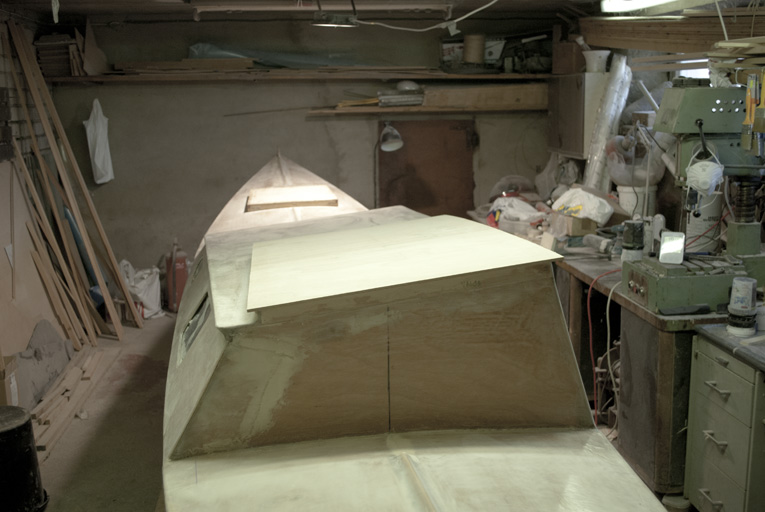
Port hull almost done, still lots to do…
… waiting in the list:
Hi folks, it has been a while, since my last blog post, but nevertheless Tiki project hasn’t stayed idle. Day by day Itatae has gathered some flesh into bones.
Here is latest report…

Taking time to smooth out the wrinkles makes it easier later.

Well thats nice, isnt it…

Last drops of epoxy and last bits of glass joined with painstaking care 😛

Hefty overhang for stem (trimmed later with carpet knife before resin is fully set)

Finshed product.

Finshed product with Microlight filler coat.
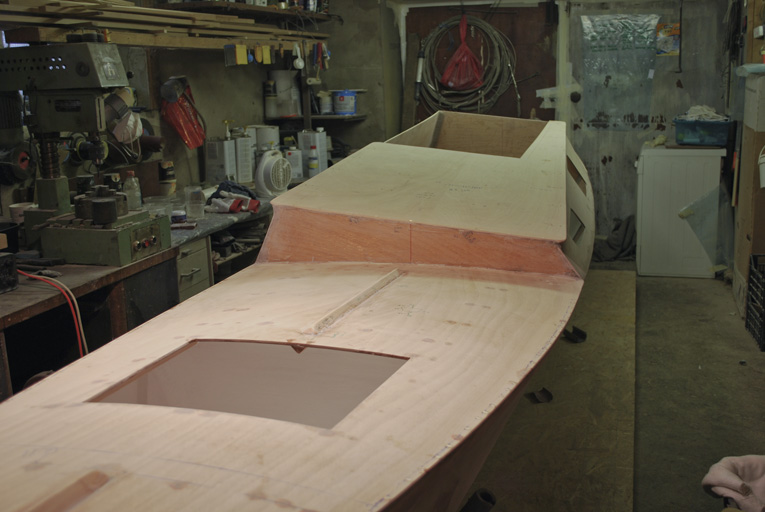
Back on heels.

She will look nice, doesn’t she…
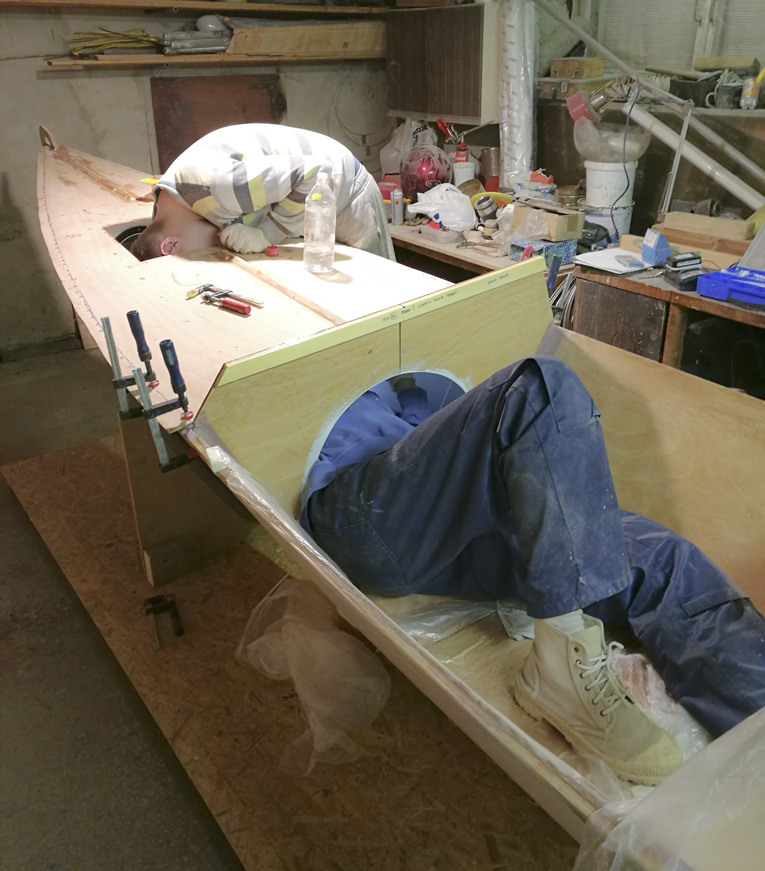
With extra pairs of helping hands it was rather pleasing act to glue on the forward deck.
Thanks a lot, mates!

Bunks are ready for port hull. Now there will be some paint job (Tikkurila Temacoat RM40) and stringer job before gluing the decks on. Looking good, hopefully I could keep up the pace…
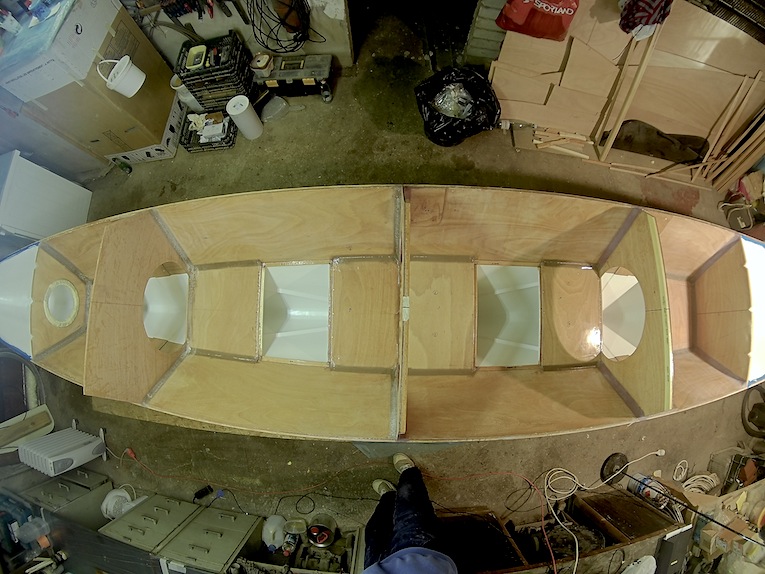
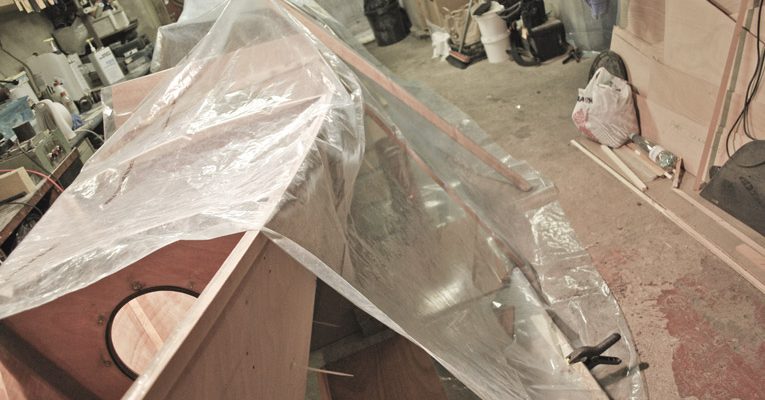

Epoxy cooking in winter conditions… coating bunk undersides.

There has been pretty few progress since port hull went 3D, but thanks to yesterday’s long hours in garage all the bunks and stringers are ready for next phase, which means a little bit of sanding and then painting underneath of bunks and watertight compartments as well, before gluing bunks in.
A fellow amateur Tiki builder Brad shared his experience in Southwinds magazine. Check out his story in page 44.
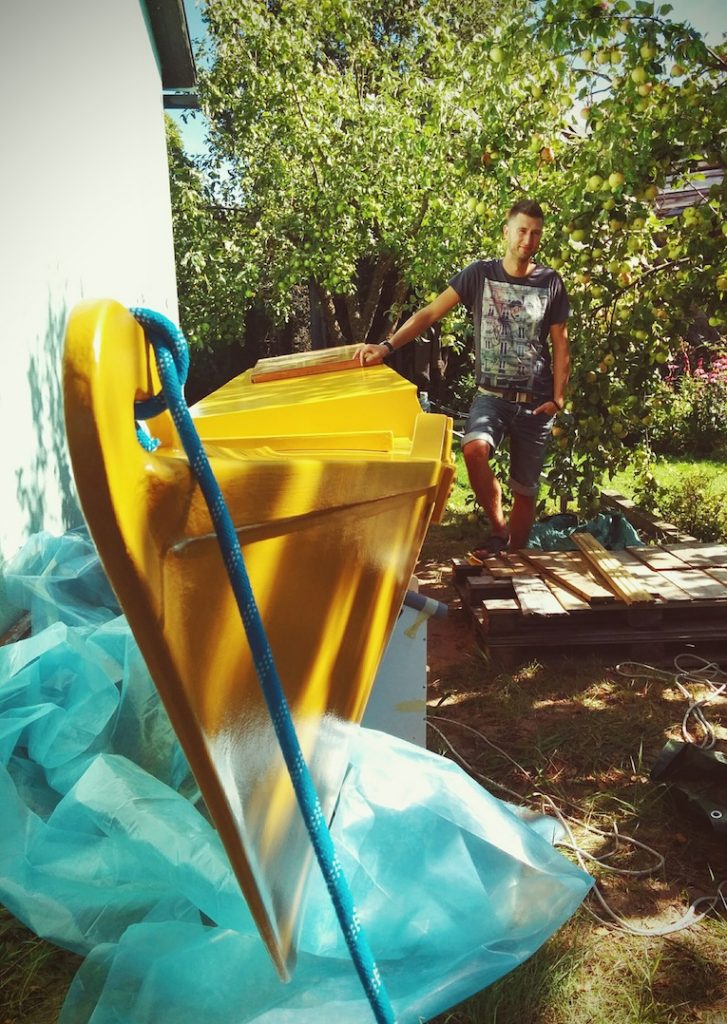
shot by mr Gab
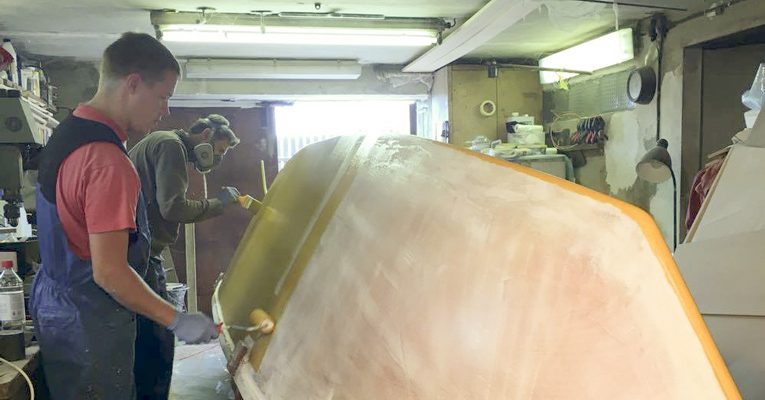
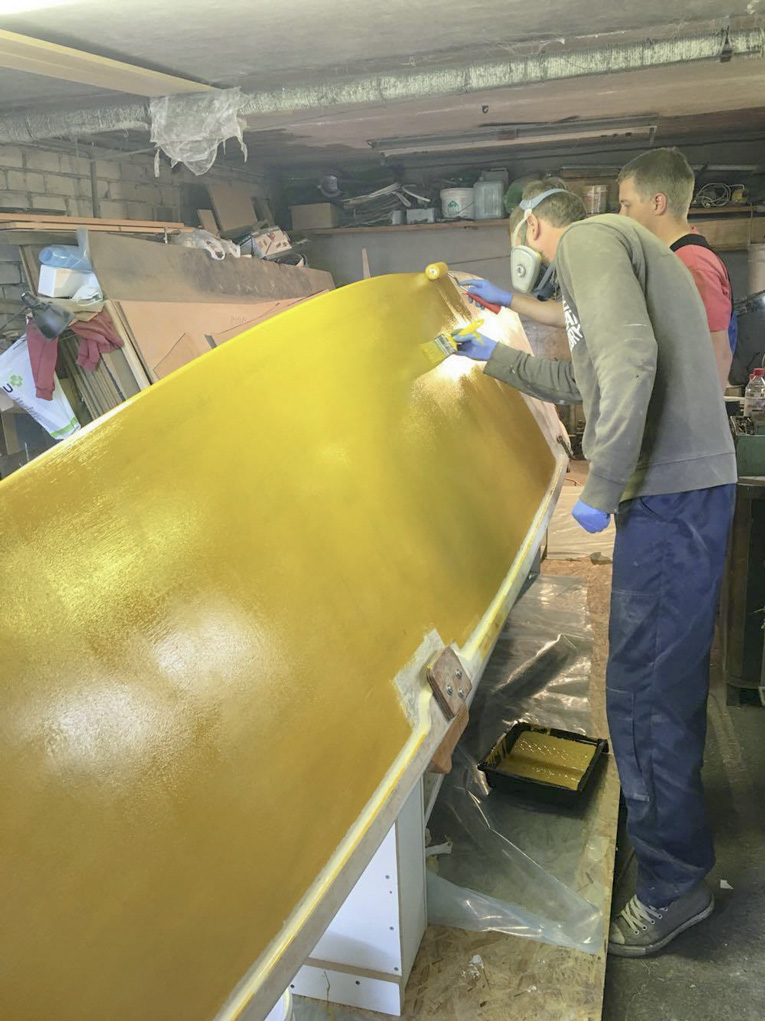
A friend lent me a helping hand, so applying the roll & tip technique was a piece of cake. It took only 1,5h hours to entirely coat the hullsides. After few hours we added second coat and in next morning Itatae received third one. Im thinking to add fourth layer as well and this time I plan to add some thinner as well, to get a bit smoother surface.
By the way – I switched from Tikkurila Temadur 20 (polyurethane) to Tikkurila Temacoat RM40 (epoxy based), which is much easier to apply as it does not give such potent fumes as the first one, also it has a bit longer pot life as well – which are much appreciated characteristics when you are amateur builder working in tight conditions. So, will see how this thing will work out in the end.
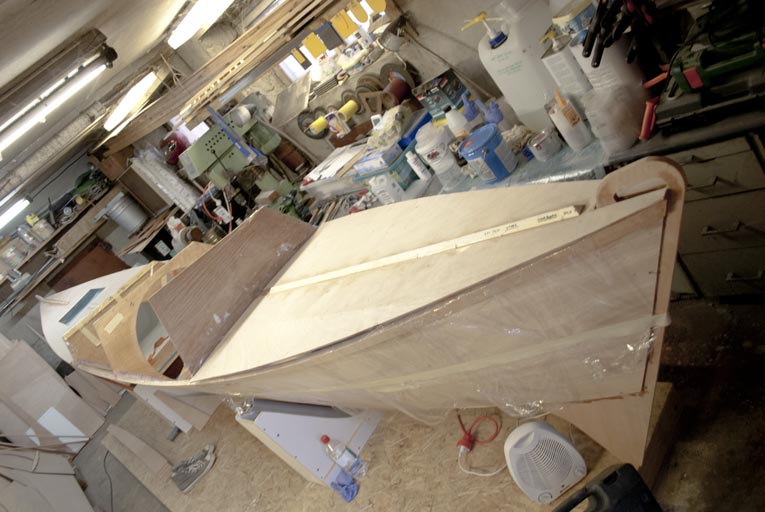
So whats the balance for now… With a bit more than half a year I have managed to assemble starboard hull up to the decks. Later ones have been prepared for gluing.
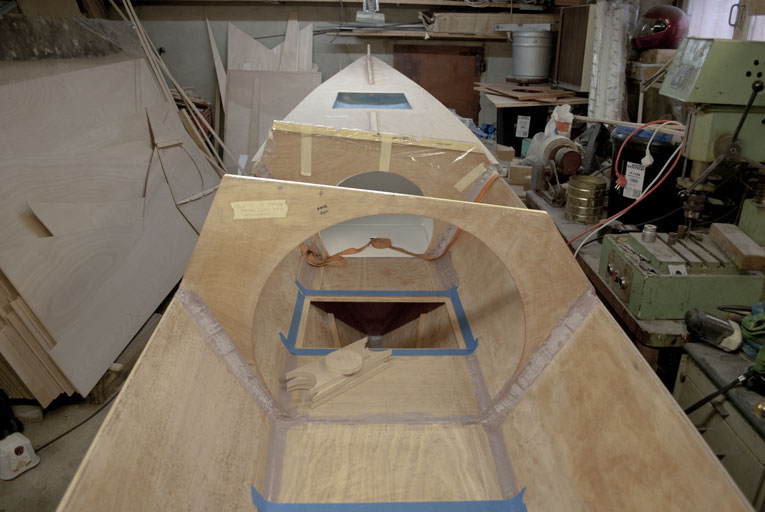
Next item in the plan is to paint undersides of the bunks before starting with cabin sides. All nicely prepared, waiting for the right vibes…
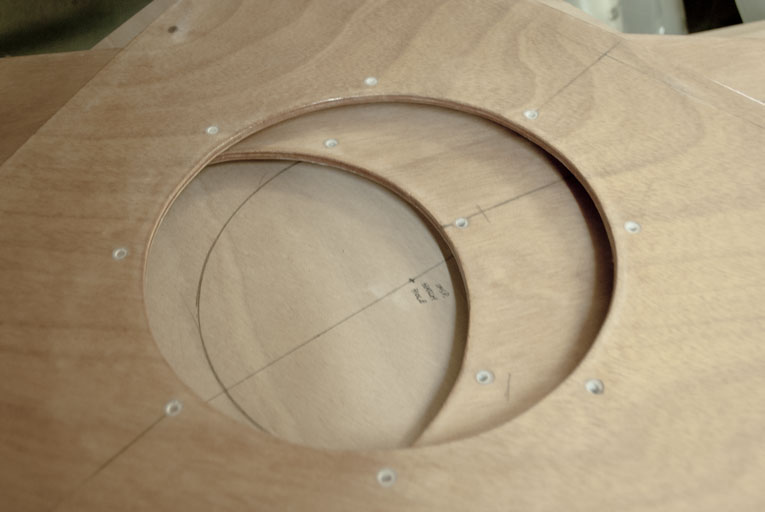
Broadsides & bulkheads of the port hull were cut out already in summer. So for a change of scenery I started with gluing deck-beams and bunk bearers, also I prepared nice thickened-epoxy holes for taking inspection hatch bolts. Maybe its overkill… on starboard bulkheads I used just screws.
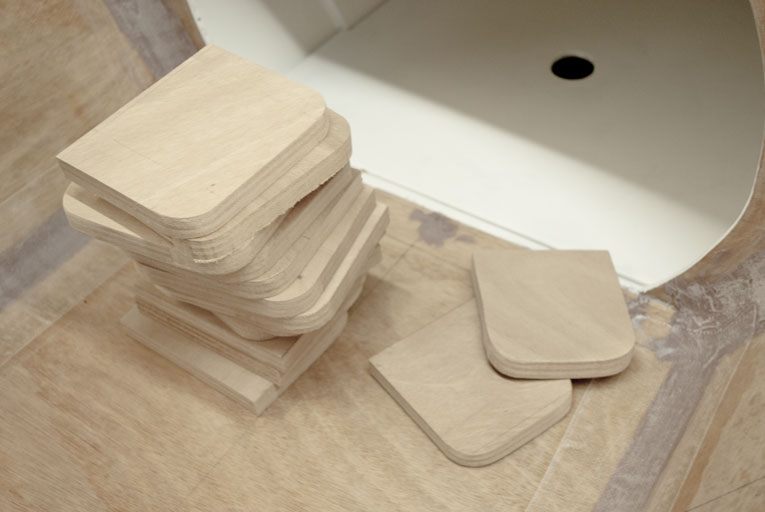
Last week I spend some therapeutic hours and cut out small pieces from the 15mm ply, namely lashing pads and butt blocks for beams…
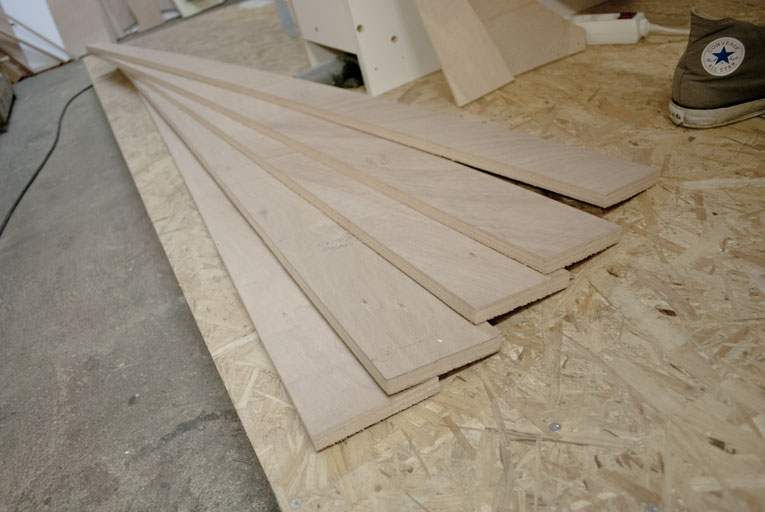
… then continued with beam web pairs, which also ended previous sanative session with a cruel fact that I miss few inches of ply sheet in order to complete all three pairs. Apparently when I produced rudders, stem & stern posts in spring, I went for too excessive safety margins…
Bugger!
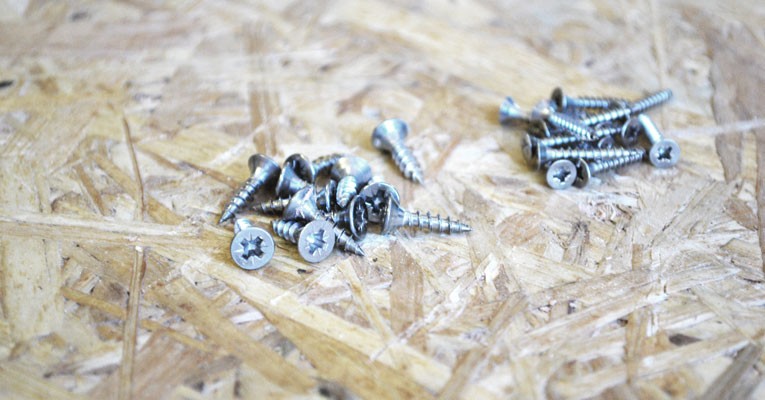
Some tweets about stuff I have used.
First, spreading the epoxy… for a large surfaces, like broadsides I found pretty convenient to use wallpaper spreading rolls. You have to clean them thoroughly afterwards, though.
Yes comrades, I sure did experiment with various rollers available in housing stores and none of them satisfied me enough (maybe those fancy West System roller set 800 & 801 would give a more fancier outcome). I found myself experimenting with plastic spreaders likewise, but not so much of success, as resin tend to turn kind of foamy…
Bulkheads, bunks, stiffeners etc has been coated with using brushes. With a certain amount of trial & error I finally kinda get the knack: first I pour out a resin trail, then brush it longitudinally with rather strong strokes (with divaricate bristles) subsequently I will spread the resin crosswise and diagonally from initial track, using smooth and not so vicious strokes. I still have not acquired the skill of producing a perfect smooth surface, there will be still some waviness left, but the outcome has been significantly improved since I implemented this technique.
Radius fillets for bulkheads, keel and bunks…. PITA for me in first place as I tried to use radius tools cut out from plywood. Those are too inflexible, so suitable only for amateur builders blessed with Houdini genes.
Also I found myself experimenting with radius tools cut out from the canisters of car window washing liquid – too flexible… Finally I stumbled upon nice bright yellow plastic spreaders in construction store that I shaped onto desired radiuses. They work like a charm. Now I would sculpt those fillets until end of my days… Well kidding, two hull worth of radiuses will do fine 🙂
For mixing epoxy I found nice ice cream cups (black ones in the pic) which are very flexible and ductile, so most of the times I have succeeded in braking off cured epoxy after the work has done. Most of the times I would pour mixed epoxy into plastic can which is usually used by decent house wives for storing the raw cranberry jam in the deep freezer. This can has a bit more surface than a ice cream cup, so epoxy does not go off so quickly. It makes great utensil for mixing the fillers as well. Also reusable most of the times.
Gluing stuff… In one of my previous post I already explained why I deviated away from using copper nails as a temporary fasteners. So I went and bought a bunch of stainless steel screws. Stainless because I presumed that I may not retrieve all the screws after epoxy has cured. And the practice demonstrated that my assumption was not so wrong after all. Few of those scrawny screws (right on the photo) decided to stay in. Despite the fact that I had cleared the heads from clue with acetone rag, still some clue managed to spoil those tiny lobes. Lesson learned… so I abandoned those and started to use screws with bigger heads (in the middle of the photo). Those are 3mm diameter & 12 mm long and do the job.
Last but not least – when messing around with epoxy or with random orbit sander don’t forget to wear a proper mask. I have 3M half-mask with detachable organic compound and dust filters, which I could combine depending the situation. 3M has a selection of masks in various sizes, so you can choose best fit for you. Im pretty pleased with one I got.
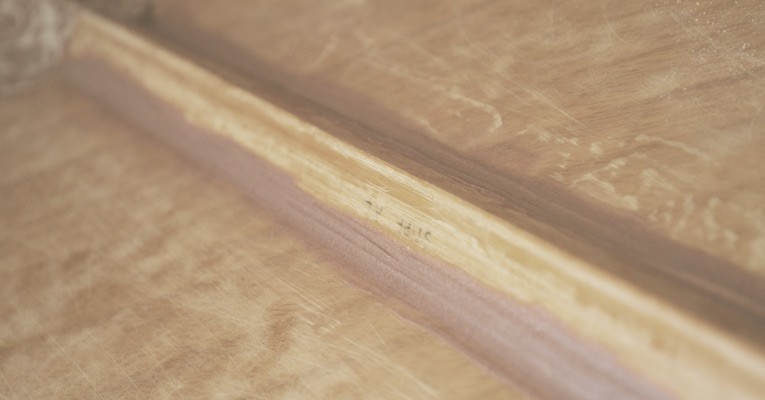
Im not sure if its overkill, but I manufactured some nice minuscule fillets for covering the stitch holes of diagonal stiffeners. Fancy stuff, my friends.

Today I filleted and glassed the stern, which means I have finished filleting bulkheads and keel. It took me about a week and lots of boat-yoga to finish this section of work.
I must admit that I did not overwhelmingly enjoyed this head down to the knees epoxy cooking… but nevertheless it is great pleasure to see how step by step those wobbling plywood panels shape up into a sturdy and beautiful boat… all done by my own two little pale hands 😉
And my condolences to this poor quay whose path may cross with this hefty stem fillet…
And again I can not get enough of those dare lines of Tiki’s – now all filleted and reinforced…
TIKI ITATAE – reinforcing the keel from AGUR VISUALS on Vimeo.
Today I continued with fillets. This time were the keel fillets in to-do list, those will be glassed as well.
I use West System 407 Low Density filler. For applying correct radius I produced plywood spatulas. But they are inflexible, so I guess I shall replace them with metal spreaders shaped in desired form…
Check out previous time lapse videos about stuffing the giant taco — starboard hull goes from 2D to 3D and filleting bulkhead radiuses.
Now as I have removed stitches of the diagonal stiffeners, I would like to share some notes on that. Cause God or Devil is in the details…
This was first time for me to perform such kind of gluing method and again I had to learn it by hard way how to make things easier.
So what I would like to point out first is that if you would like to glue all the stiffeners with single evening its better to have helper. One is stirring and spreading the glue and the other is stitching. Yes, one could install the wires to the hull prior glue spreading – but its pretty nuisance to spread the glue between those prickling wires, which will tear up one’s nitrine cloves pretty soon… Actually, when deploying the stiffeners it does no harm to wear leather cloves on top nitrine ones against the prickling ends of the wire.
What I also learned is, that when tightening the wire, its worth to pull it slightly away from the stiffener in same time – in this manner there seem more force transferring into tightening rather than braking the wire.
What you may also like to take special care of is drilling the holes – its better to have them right on the edge of stiffener, when they are inside from the line, its hard to remove the wire after the glue has cured. When the holes are too far away from the stiffeners edge then there could be a bit trouble in tightening.
Wharram suggest to drill small holes for stiffeners stitches (previously stitching the hull there was suggestion to have holes approx. twice the size of the wire) – and I can see that then you have much less epoxy surrounding the wire in the hole which makes wriggling the wire out much easier.
Wriggling – get a notch on that. It concerns the removal of the wires. I seldom used pliers to pull out the wires.
As with most of the other thousand things in life, its rarely the laboured force that helps to achieve your goals.
So take your time, snap the wire outside, bend it back straight, unwind other side and then start to slightly wriggle and turn the wire and when you feel grip of the epoxy starting to loosen then its time to pull wire smoothly out. And yes of-course, during the gluing process its smart to remove as much of excess epoxy as possible, no doubt on that.
TIKI ITATAE from AGUR VISUALS on Vimeo.
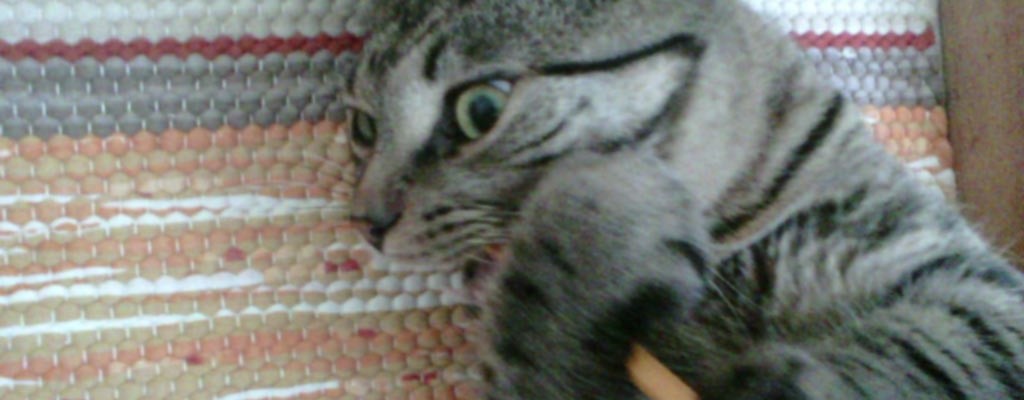


Oh Sheit, here comes the X!

Anyway, at least I got 50 kg of EPOXY if anything goes wrong….

Ah well, it feels good to cut out the puzzle pieces… finally…

But its not only the double measures presented in imperial and metric units that mess up my mind… seems that we here in continental Europe have a slightly different concept about length of the 8′ standard plywood sheet as well… a 65mm difference… have to use my brain again 🙁 (Wharram have set some of the Tiki broadside measures using plywood length as a base).

Few weeks ago I bought from Mass last pieces of Douglas-Fir needed to complete hulls. It means two 5,45m 105x52mm logs.
Im still missing pieces for the crossbeams: they need to be 3,81m long with cross section of 120x20mm. I have to hope a miracle on that!
Anyway, I had to use again lots of Veiko’s elbow grease to cut them in suitable battens and planks.
Thanks again Veiko and Jaanika! Your help is again appreciated a lot!
Gluing deck beams to bulkheads. Using epoxy and microfibres (as its bare wood).
Lesson learned: nailing the thing down could be pretty messy – deck beam tends to slip from its desired position, pressure of the nails stays kind of uneven, there is constant threat of splitting the wood in the end of the pieces (poplar, Populus tremula, in this case) and finally it takes to much of hammer-power to drive those nails home and this is something you ought not want to to in the edges of narrow wood pieces. So I pretty much missed that later part, because furthermore it seems that if I will hammer fiercely, then all the remaining glue oozes out of the joint finally. Ah yes, did I mentioned sanding – you have to get those copper nail heads and leftover nail tips in the other side pretty much even with surrounding surface in order to get decent outcome.
So, despite Wharram suggestion to use nails in gluing deck beams, butt blocks, sheerstringers etc., I decided to abandon the nails (as they are not structural elements anyway) and go for clamping or weights or using temporary screws, depending on situation. And as I mentioned in previous post I have gathered reasonable amount of wood clamps anyway.
PS! Only deck will be nailed to the hulls, as there are not any of intelligent solution for that, at least something that Im aware of.
PPS! Recently there was pretty intense discussion over the nails question in Wharram builders forum, jump the thread here.
I executed my first experiment with epoxy. Its my miniTiki above.
I decided to use West System, which is not cheapest, but its manufacture line seems most coherent and of course because it is very well known and proven brand in wood-epoxy boat building world. For an amateur like me it makes lots of sense to acquire all the epoxy, hardener, fillers, glass and other various bits and pieces from one manufacturer. I found that application information (including video tutorials) was most easily to be found for West System products. Not to mention that here in Estonia there are not much of other brands in retail.
I got my stuff from Bang & Bonsomer Estonia, although they seem to deal mostly with big guys, they were most helpful and I got all the components needed to produce desired epoxy magic.
Here is little tip I used during lofting the bulkheads, broadsides etc. Check the measure from the plans, mark it on the ruler, transfer it on the wood. It frees up little bit of cache which you can use for double checking weather you mark the right measure onto the correct spot. After transferring the measure, wipe off the marker and continue with new number.